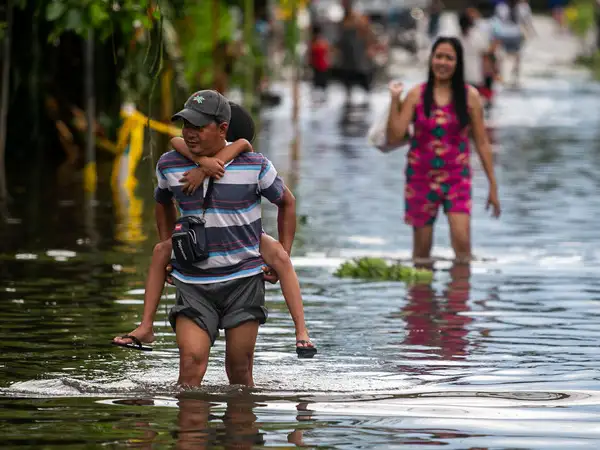Please note: CAFOD does not currently run any programmes in the Philippines but we continue to support trusted local partners during emergencies.


In November 2020, the Philippines was hit with two record-breaking typhoons that caused widespread destruction. Photo credit: Caritas Philippines (NASSA)
CAFOD started working in the Philippines in 1969 when a typhoon struck the country with heavy rainfall, strong winds and storm surges. It caused widespread destruction, including damage to infrastructure, agriculture and housing, as well as loss of life.
Soon afterwards, we began defending human rights at the height of martial law under President Ferdinand Marcos in the 1970s. A wave of arrests targeted anyone perceived as opposing Marcos, including students, politicians, journalists and religious figures. Civil rights were suspended, including freedom of speech, and many people were detained without trial or formal charges – as 'political detainees' rather than 'political prisoners'.
Since then, we’ve been responding to typhoons that regularly hit the Philippines.
A better world needs all of us. That’s why CAFOD has worked together with partners in the Philippines for decades. Together, we’ve supported vulnerable communities to rebuild following devastating typhoons.
Why CAFOD has worked in the Philippines
The Philippines is highly prone to natural disasters because of the archipelago's location along the Pacific 'ring of fire' tectonic belt (meaning it is extremely susceptible to seismic and volcanic activity). The Philippines is prone to disasters triggered by natural hazards and dangerous tropical storms – a situation made so much worse by the climate crisis.
On 8 November 2013, Typhoon Haiyan hit the Philippines and tore apart the lives of more than 14 million people. The typhoon was one of the most powerful storms ever to make landfall – it left more than 5 million people homeless. We responded to the disaster within hours, providing emergency supplies like food, shelter, water and sanitation.
In the aftermath of Typhoon Haiyan, we helped to rebuild houses and we worked with parishes, community organisations and local governments to ensure that people were better prepared for typhoons. We also helped communities to develop early warning systems and to create plans for what to do when disasters strike in the future.
More than a decade later, typhoons continue to wreak havoc.
How we’ve responded
By working together, a better world is possible. That’s why we’ve worked alongside our Church partner, Caritas Philippines National Secretariat for Social Action, to provide emergency and early recovery assistance to families and communities affected by disasters. Your donations have helped families rebuild and flourish:
In November 2019, a powerful earthquake struck the province of Cotabato in the southern part of the Philippines. We supported Caritas Philippines’ response to the earthquake, providing assistance to more than 2,000 families.
In December 2021, Super Typhoon Rai, known in the Philippines as Super Typhoon Odette, was a deadly and extremely destructive super typhoon (and the second-costliest typhoon in the Philippines' history behind Typhoon Haiyan) – it affected 38 provinces in the Philippines. Most of the affected communities were in mountainous and coastal areas, causing enormous damage to homes and livelihoods. Alongside other Caritas agencies, we provided support to our partner Caritas Philippines for assistance to more than 10,000 families in several dioceses, in the form of shelters, cash assistance and better preparedness for future emergencies.
In late October 2022, Severe Tropical Storm Nalgae was a very large and deadly tropical cyclone that wreaked havoc across the Philippines. We provided emergency shelter and livelihood assistance to communities affected by the heavy flood and landslides in Luzon, Visayas and Mindanao provinces.
In December 2023, we supported Caritas Philippines’ emergency and early recovery assistance project to assist communities affected by another tropical storm and heavy flooding in southern and eastern parts of the Philippines.
News from the Philippines

What we do
CAFOD is the official aid agency for the Catholic Church in England and Wales.
With your help, we reach out to people living in hard-to-reach places, in war zones and those who are discriminated against.





